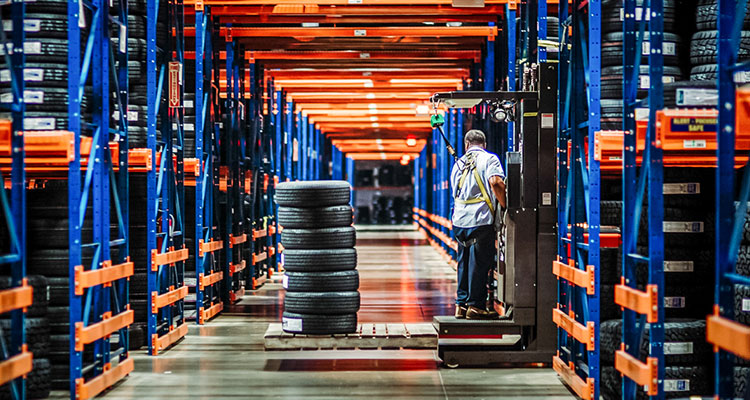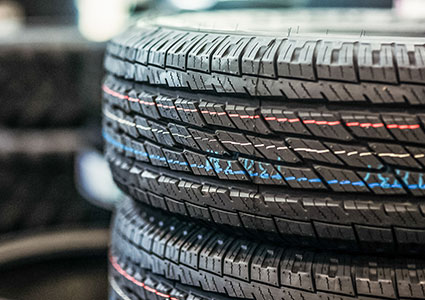
Discover how American Tire Distributors’ analytics promote supply chain triumphs
As the largest tire distributor in the US, and the world’s largest replacement tire distributor, American Tire Distributors (ATD) has handled more than a staggering 250 million tires. With an extensive and expanding distribution center network, ATD caters to the needs of some 80,000 loyal customers throughout the country. As testament to its commitment to growth and excellence, ATD has recently opened a new distribution center in Louisville and in Salt Lake City, further expanding its reach and capabilities. The company’s remarkable trajectory is fueled by its dedication to providing exceptional service and products to its vast customer base. Moid Alwy, Chief Supply Chain Officer, sheds light on the company’s history and evolution.
 “ATD is an automotive aftermarket organization and a connected automotive solutions provider. Our primary focus is to ensure that the automotive industry has access to the replacement tires, wheels, and parts necessary to keep vehicles on the road. Our history can be traced back to the 1930s when ATD was initially established as Heafner Tire Company. Since the company was started almost a century ago, it has experienced significant growth through a combination of acquisitions and organic expansion, ultimately evolving into the entity known as ATD. Today, our corporate office is situated just outside Charlotte, North Carolina. Charlotte is in the southeast region of the US and is known for being a financial hub, home to major banking institutions and major retail headquarters. This makes it a talent hub for various industries. From a distribution perspective, our footprint covers 113 distribution centers across the entire US, apart from Alaska and Hawaii. This means we have a presence in nearly every state, allowing us to deliver tires to around 120,000 automotive retail locations. These locations are part of three different channels. The first channel consists of car dealerships. The second retail channel includes national automotive retail chains and big box retailers. The third channel comprises core family-owned retail businesses, typically operating with one or more locations,” he begins.
“ATD is an automotive aftermarket organization and a connected automotive solutions provider. Our primary focus is to ensure that the automotive industry has access to the replacement tires, wheels, and parts necessary to keep vehicles on the road. Our history can be traced back to the 1930s when ATD was initially established as Heafner Tire Company. Since the company was started almost a century ago, it has experienced significant growth through a combination of acquisitions and organic expansion, ultimately evolving into the entity known as ATD. Today, our corporate office is situated just outside Charlotte, North Carolina. Charlotte is in the southeast region of the US and is known for being a financial hub, home to major banking institutions and major retail headquarters. This makes it a talent hub for various industries. From a distribution perspective, our footprint covers 113 distribution centers across the entire US, apart from Alaska and Hawaii. This means we have a presence in nearly every state, allowing us to deliver tires to around 120,000 automotive retail locations. These locations are part of three different channels. The first channel consists of car dealerships. The second retail channel includes national automotive retail chains and big box retailers. The third channel comprises core family-owned retail businesses, typically operating with one or more locations,” he begins.
Tire trends
Delving into the dynamic automotive industry, Moid explores the significant changes that impact ATD’s operations. “On one hand, the automotive industry remains much the same as it’s been for decades. For example, the process of getting gas for your car has stayed the same – you still drive to a station and fill up the tank – a practice that has endured for a century. Likewise, the process of replacing tires hasn’t seen revolutionary change. However, the vehicles themselves have evolved significantly, becoming more connected, and tire technology has advanced with various types of tires available. For ATD, staying ahead means keeping a keen eye on where the automotive industry is heading. We need to position ourselves strategically to succeed in this ever-changing landscape. A prime example of this is the ongoing transformation toward electric vehicles (EVs). We are closely monitoring trends in the EV sector, understanding the shifts and evaluating their impact on our business. One significant consequence is the need for a broader assortment of tires, as EV tires differ from those used in traditional vehicles. So, we must ensure we have a wide range of options to meet the demands of the evolving EV market. To stay informed, we maintain close connections within the industry, ensuring that we are aligned with their industry roadmaps. This approach keeps us well-positioned for the future,” he explains.
An essential catalyst to ATD’s growth is its extensive use of data and analytics. “I think the most effective way to shield yourself from industry disruptions is through data and analytics. The supply chain is inherently data-intensive, and the current environment demands an even greater volume of data. Traditionally, supply chains have retrospectively analyzed defects to identify trends and make improvements. But in the current landscape, it’s becoming increasingly crucial to focus on anticipating and preventing issues before they occur. Data analytics and advanced artificial intelligence (AI) capabilities play a vital role in this transformation. By harnessing these technologies and considering various external factors, we can gain a clearer understanding of what to expect in the future. This knowledge allows us to prevent potential issues and have contingency plans in place to address them if they arise. Consequently, our team can shift from simply sifting through data and wondering if problems will occur to proactively solving them. Excelling in the effective use of data and analytics enables us to provide superior customer service at a lower cost, ultimately facilitating business growth and expansion,” Moid informs.
Discussing the topic of sustainability, a top priority within the industry, Moid emphasizes that ATD’s sustainability initiatives can be categorized into two primary aspects. “The first aspect we consider is the tires themselves. In the US, approximately 300 million tires are replaced annually, and a significant majority of them end up in landfills or are incinerated, which is not a sustainable disposal method. Our goal is to become a national provider of responsible tire recycling within a circular economy. We are actively collaborating with our partners to ensure that we offer this environmentally responsible service. Secondly, we are dedicated to reducing our own carbon footprint. This involves evaluating our operational efficiencies, such as avoiding driving if it isn’t absolutely unnecessary, optimizing routes, and investing in electrifying our fleet. We have approximately 1400 vans and trucks on the road daily, and we want to make sure these vehicles are utilized in an environmentally responsible manner,” he adds.
AI and automation
Looking to the future of the supply chain, Moid considers the increasing influence of AI, technology, and sustainability. “Supply chain organizations that effectively harness the power of data analytics and AI will have a distinct advantage. Success in this context also involves managing the transformation within their teams. This means that the roles and capabilities of individuals in the supply chain workforce will evolve significantly over the next three-to-five years. Efficient companies will seek to smoothly transition their supply chain workforce into this new world. This transition involves leveraging AI to anticipate and address future exceptions and challenges. In contrast, many supply chains currently rely on manual handling of a substantial amount of data sorting and workflow. I believe the future will see automation taking a more prominent role in streamlining these processes, and technology will be a pivotal factor in shaping the daily activities of supply chain professionals,” he ends.
Through the provision of exceptional products and services, as well as a forward-looking approach, ATD aims to empower fleets to achieve true sustainability. The company accomplishes this by leveraging advanced logistics and analytics, which steer it towards further success.